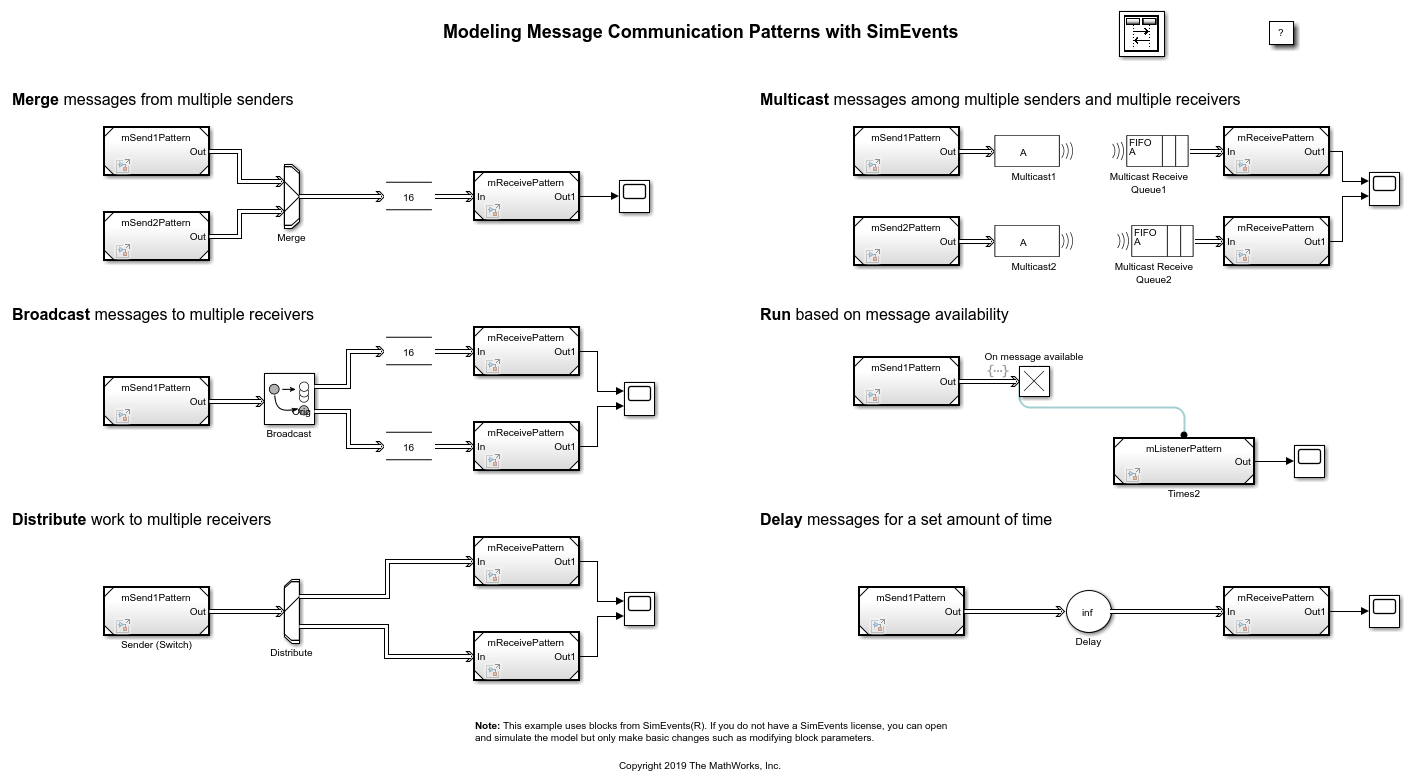Modeling Message Communication Patterns with SimEvents
This example shows how to create common communication patterns using SimEvents®. In message-based communication models, you can use SimEvents® to model and simulate middleware, and investigate the effects of communication and the environment on your distributed architecture.
The systems in this example represent common communication patterns created by using SimEvents® blocks that can be used to simulate various network types, such as cabled or wireless communication, and channel behavior such as failure, or packet loss.

The communication patterns involve:
Merging messages from multiple senders.
Broadcasting messages to multiple receivers.
Distributing work to multiple receivers.
Multicasting messages among multiple senders and multiple receivers.
Running a component based on message availability and data.
Delaying messages for a set amount of time.
To create more complex networks and channel behavior, use combinations of these simple patterns.
By using these patterns, you can model:
N -to- n communication with multiple senders and receivers with an ideal channel with communication delay. For an example, see Build a Shared Communication Channel with Multiple Senders and Receivers.
N -to- n communication with channel failure and packet loss. For an example, see Model Wireless Message Communication with Packet Loss and Channel Failure.
An N -to- n Ethernet communication network with an inter-component communication protocol. For an example, see Model an Ethernet Communication Network with CSMA/CD Protocol.
See Also
Sine Wave | Send | Receive | Queue